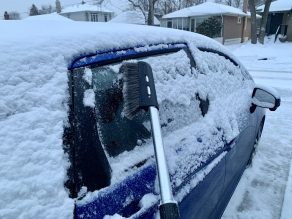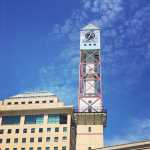Are You Prepared this Winter? Plan Ahead for an Emergency
City services | December 12, 2022
Winter can be dangerous. Storms bringing heavy snow, black ice, hail, heavy winds and freezing rain can appear in the blink of an eye. It’s important to know how to protect yourself and your family if your home loses power or heat, or if your vehicle gets stuck in the snow. Here are some tips to help you get prepared.
Get Your Home Emergency Ready
If a major winter storm hits, you could be stuck inside for a few hours or even a few days. That’s why it’s a good idea to prepare for a minimum of 72 hours.
- Start with a plan: It’s important that you and your family know what to do in an emergency. This includes staying indoors and establishing a network of people (family, friends, coworkers and neighbours) who can assist you during an emergency.
- Prepare an emergency kit: You should have an emergency kit for your home. Make sure to check your emergency kit twice a year to make sure everything is still in working order and the food is still safe to eat. Some of the items you may want to consider for your kit include:
- Non-perishable food
- Bottled water
- Manual can opener
- Battery-powered radio and flashlight
- First aid kit
- Blankets
- Extra hats, gloves, coats and footwear
- Know how to protect your home if there’s a power outage: If a power outage leaves you without heat for some time, remember to drain your water pipes and shut off the main water supply to prevent pipes from freezing and bursting (if you live in a house).
- Prepare when you go outside: If you must go outside, it’s important to dress for the weather and let someone know your route and expected arrival time.
Plan for Safe Winter Travel
During a winter storm, it’s best to stay off the roads if you can. However, if you must drive in a winter storm, be extra careful on the road.
Before leaving:
- Prepare an emergency kit for your vehicle: Your kit should include items like non-perishable food, bottled water, battery-powered radio and flashlight, a first aid kit, blankets, a small shovel, a warning light or flare, an ice scraper and snowbrush, anti-freeze and windshield washer fluid, jumper cables and sand, salt and cat litter.
- Dress warmly before heading out: It’s best to dress for the weather, in case you may need to leave your car (e.g. vehicle stuck in the snow).
- Plan for delays: Consider leaving earlier. If this is not possible, before you leave, alert those at your destination that you may be late.
- Prepare your vehicle: Clear your vehicle of snow and ice, and make sure your windshield washer fluid is full.
On the road:
- Reduce your speed: Slow down and drive according to the conditions.
- Leave lots of space: There should be a lot of space between yourself and other vehicles on the road. It will likely take longer for your vehicle to come to a full stop when you apply the brakes. If your vehicle begins to skid, always steer into the skid until you regain control.
- Watch for emergency vehicles or snow clearing equipment: Pay attention, and if you see an emergency vehicle or snow clearing equipment, move over to provide them space.
Stuck in the snow?
- In an emergency, call 911.
- Try to stay calm and don’t leave your car in blizzard conditions.
- Keep the engine off as much as possible as there’s an increased risk of carbon monoxide poisoning.
- Turn on your warning lights to make your vehicle more visible.
- Keep an eye out for other vehicles and emergency responders.
- If you’re stuck, but the conditions are safe, you can try to:
- Clear snow around your tires with a shovel. Make sure to clear your exhaust pipe to prevent carbon monoxide poisoning.
- Use cat litter, sand or floor mats to gain traction. Lay it under your tires to help give you enough grip.
- Melt the ice with salt under your tire. If you don’t have any, try windshield washer fluid or anti-freeze.
- If you’re unable to get your car out, call a tow truck company. However, it’s important that you know your rights. Tow trucks must follow the City’s Tow Truck Licensing By-law.
- If the vehicle is drivable, you can drive off yourself. However, if it’s not drivable, you have the right to choose your tow truck provider and where you want your vehicle towed unless told otherwise by emergency personnel on scene.
- The cost to remove vehicles stuck in snow varies from company to company. It’s best to confirm the price when calling the tow company. Tow truck drivers must accept multiple forms of payment and provide you with an itemized bill of services.
For more information about how to prepare for an emergency, visit: mississauga.ca/services-and-programs/health-and-safety/how-to-prepare-for-an-emergency/
Tags
Media contact
City of Mississauga Media Relations
media@mississauga.ca
905-615-3200, ext. 5232
TTY: 905-896-5151




